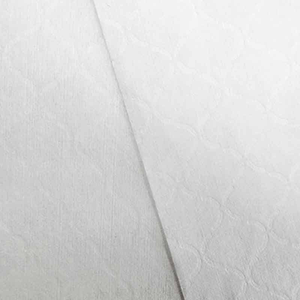With the increasing awareness of environmental protection,
Flushable Nonwoven Fabric (FNF) is becoming a star material in the field of wet wipes and sanitary products. However, many consumers and buyers still have questions about its safety and environmental friendliness. In this article, we answer your top 5 questions from an industry perspective to help you fully understand this innovative material.
I.what is a dispersible nonwoven? What is the difference between it and ordinary nonwoven fabrics?
Flushable nonwoven is an environmentally friendly material designed to disperse and decompose quickly after being flushed down the toilet, usually made from natural fibres (e.g. wood pulp, viscose) or biodegradable synthetic fibres. Its core difference is:
Dispersibility: when in contact with water, it quickly disintegrates into fine fibres, avoiding clogging of the pipes (in accordance with INDA/EDANA GD4 standards).
Degradability: can be broken down by microorganisms in a wastewater treatment environment, reducing environmental pollution.
Strength balance: maintains sufficient strength when dry and disperses quickly when wet.
Common Misconceptions:
‘Dispersible = disposable’ → Recognise the “Dispersible” certification mark and follow municipal drainage guidelines.
II.Are dispersible nonwovens really environmentally friendly?
Environmental protection is the core selling point of flushable nonwovens, but its environmental friendliness needs to be assessed from the whole life cycle:
Raw materials:
FSC certified wood pulp is preferred to ensure sustainable forest management.
Plastic fibres (e.g. polyester) are rejected in favour of bio-based materials such as PLA.
Production process:
The hydroentanglement process has low water consumption and some companies have already recycled wastewater.
Waste Disposal:
Passed OECD test, 28 days biodegradation rate >60%.
Compare with traditional wipes: 80% reduction of the risk of marine microplastics.
Authoritative Certification:
✅ ISO (compostability certification)
✅ Fine to Flush (UK Water Authority Flush Certification)
III.how safe is the dispersible nonwoven? Will it damage the skin?
Safety is a key consideration for medical, maternal and child products. Quality flushable nonwoven fabrics need to meet:
Chemical safety:
No fluorescent whitener, formaldehyde (OEKO-TEX Standard 100 certified).
pH neutral (5.5-7.0), suitable for sensitive skin.
Physical Safety:
Fibre diameter >35 microns to avoid inhalation risks (EU REACH compliant).
Application Example:
After an international baby wipes brand adopted dispersible nonwoven fabrics, the allergy complaint rate of customers dropped by 45%.
IV.what are the main application areas of dispersible nonwoven fabrics?
Personal care:
Flushable wipes (intimate care, make-up remover wipes).
Surface layer of sanitary napkins/diapers (reduce the amount of waste).
Medical field:
Dispersible medical wipes (post-operative care, instrument cleaning).
Household cleaning:
Disposable mopping cloths, dishcloths (solve grease clogging problems).
V. How to judge the quality of dispersible nonwoven fabrics? What do I need to pay attention to when using it?
Selection guide:
Check the certification marks: GD4 standard (dispersibility), OK Compost (degradability).
Measure the performance:
Dissipation test: Take 1 piece of cloth into 500ml of water, it should be completely dispersed after stirring for 5 minutes.
Strength test: Longitudinal strength ≥15N/5cm in dry state (to prevent breakage in use).
Precautions for use:
⚠️ It is prohibited to flush in large quantities in a concentrated manner (≤2 pieces in a single flush);
⚠️ Old pipes are recommended to be discarded to the rubbish bin;
⚠️ Avoid mixing with grease to disperse.
VI.The future of dispersible nonwovens
As the global ‘plastic ban’ escalates (e.g. EU SUPD Directive), dispersible nonwovens will become the mainstream alternative to traditional plastic wipes. Choosing a certified supplier (e.g. ISO 9001 factory) will ensure performance and environmental responsibility.

